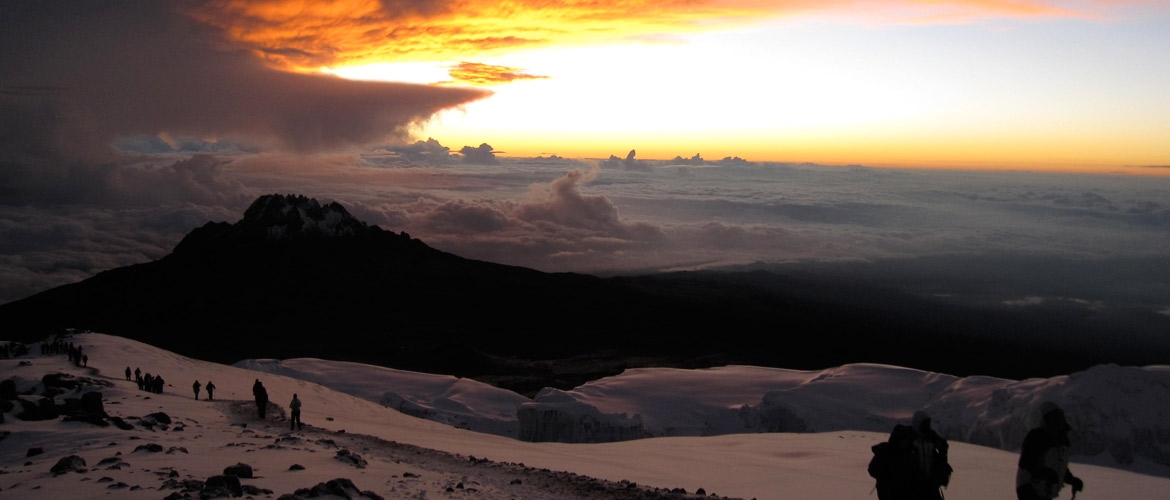When to Climb Kilimanjaro


Mount Kilimanjaro is one the most exotic and beautiful trekking expeditions in the world. You travel through every ecological zone in East Africa, have a chance to see some of the most coveted animals on the continent and get to add a world class climb to your resume. Many people climb Kilimanjaro because it is a “trek” that allows you to gain backpacking skills at high altitude. “Trek” means that no technical climbing skills are required. However, just because “Kili” is a trek does not mean you shouldn’t take the mountain seriously. As one of the seven summits, Kilimanjaro is an adventure and true challenge and therefore demands thorough judgement as you plan your trip there.
A major decision is deciding when to climb. Let’s take a look at when is the best time to climb Kilimanjaro. You can climb Kilimanjaro year-round and honestly, it will be a life-changing experience no matter what the weather or temperature is. But there are wet and dry seasons and the mountain experience is quite different based on time of year.
December, January and February – One of the best times to climb with dry, sunny weather and stellar blue skis. Trust us, if you are traveling and camping in a distant country, we advise you make it the most comfortable trip possible and stay dry. This allows you to focus on your climb, engage with the inspirational people you meet along the way, and enjoy the breathtaking views along your route.
March – A shoulder season heading into Kilimanjaro’s wettest time, March can go either way. We’ve had great summits in March, but also quite wet trips.
April, May– If you want to wear a raincoat and don’t mind clouds, then book your flights to Tanzania during these months, which constitute Kili’s wet season. Alpenglow does not run group trips during this time, but we have had private groups summit during the rainy season, and some trekkers really enjoy the crowd-free days on the trail and summit.
June, July, August, September– Sunny and clear, albeit a bit colder than the northern hemisphere’s winter months, but climbing in brisk air and sunshine sounds great to me, especially because that’s also when I can take time off from work.
October – Shoulder season again, with weather that can go either way.
November – There is a short rainy season until the beginning of December when the mornings and evenings are clear, but clouds often appear in the afternoon, and rain is common.
Because Kili is an approachable high-altitude climb for beginners, and also just because it’s gorgeous, the mountain is busy. Your best plan of attack is to avoid crowded routes. Because it’s dry and warm from June through October, many people choose to travel then; but take this little tip from an insider: pick your route wisely, crowds do not allot for good timing when you’re summiting a 19,341 foot mountain. You want to be right on schedule for your summit. In fact, if you’re not, and the route is crowded, your chance of summiting decreases. And so do your opportunities for taking stunning summit pictures.
The Rongai route is the least traveled route on the mountain and is far more remote than the busy Machame and Marangu Routes. Alpenglow takes the Rongai route every time we climb and we have a 98% success rate at reaching the summit. Rongai is also one of the longest routes, which helps you acclimatize better. Gradual acclimatization is a key to success for a Kilimanjaro summit. Altitude sickness can lead to headaches, nausea, dehydration, and fatigue.
Altitude sickness is serious and something you don’t want to battle on your trek from Gilman Point along the crater to Uhuru. I can guarantee it will ruin the stunning summit view of Kilimanjaro’s glaciers (estimated to possibly disappear by 2050?) and the ash pit at the center of the “Roof of Africa.” Playing it safe, taking a remote route, and going with certified guides will reinforce the chances of your summit success. The summit push is definitely something you’re going to want to write home about, so go slowly and listen to your guides as you experience the most incredible trek in the world.